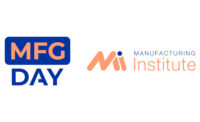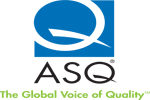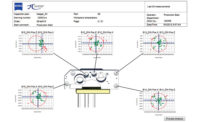ARLINGTON, VA - While the economic recovery in manufacturing is likely to be marked with numerous rough patches, signs are finally emerging that the sector can expect brighter days ahead, according to the quarterly Manufacturers Alliance/MAPI Survey on the Business Outlook-September 2009 (ER-687e), an indicator for the industrial sector. The September 2009 composite index rose to 38 from a near-historic low of 24 reported in the June 2009 report. It also represents the highest level in a year, or since an index of 48 was recorded in September 2008.
At 38, however, the index still indicates that overall manufacturing activity is expected to contract over the next three to six months, relative to the levels of one year ago when the economy was entering the severe recession. It should also be noted that the index measures the direction of change rather than the absolute strength of activity in manufacturing. The September 2009 index marks the fifth consecutive quarterly reading below 50, the demarcation point between growth and contraction.
“The rise in the composite index and the individual indexes, most of which reached record lows in the first or second quarters of 2009, point to the start of a recovery in the manufacturing sector,” says Donald A. Norman, Ph.D., MAPI Economist and survey coordinator. “While many of the individual indexes remain at very low levels, the forward-looking indexes, like that for annual orders, are at much higher levels, indicating that manufacturing activity is expected to increase in 2010.”
While a variety of individual indexes are included in the survey, the business outlook index is a weighted sum of the shipments, backlogs, inventories, and profit margin indexes.
As noted by Norman, there was some positive momentum in the group of forward-looking indexes.
September is the quarter when executives are first asked about their expectations for the next calendar year in a number of areas. The annual orders index, based on a comparison of expected orders for all of 2010 with orders in 2009, was a strong 66%. The non-U.S. investment index provides insight into expectations regarding capital expenditures abroad. The September 2009 index was 52%, with respondents thereby anticipating marginally increased expenditures for capital spending outside the United States.
The U.S. investment index, which queried executives on their expectations regarding capital investment in 2010, was 47%, indicating slightly less domestic investment next year. The research and development (R&D) index asked respondents for their insights regarding R&D spending in 2010 compared to 2009. The R&D index was 49%, nearly equal to what companies will spend on R&D this year.
For more information, visitwww.mapi.net.
Get our new eMagazine delivered to your inbox every month.
Stay in the know with Quality’s comprehensive coverage of the manufacturing and metrology industries.
SIGN UP TODAY!Copyright ©2024. All Rights Reserved BNP Media.
Design, CMS, Hosting & Web Development :: ePublishing


